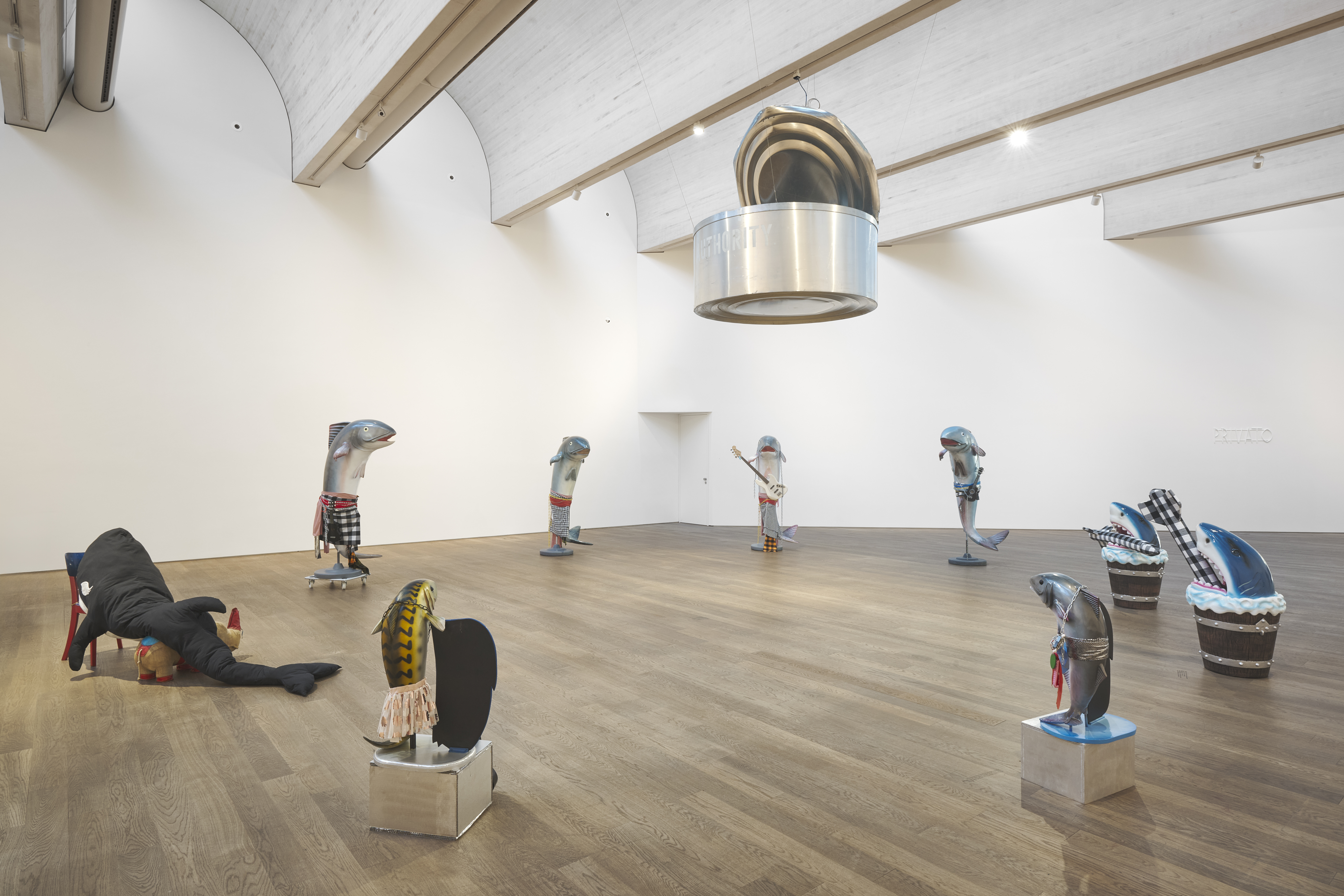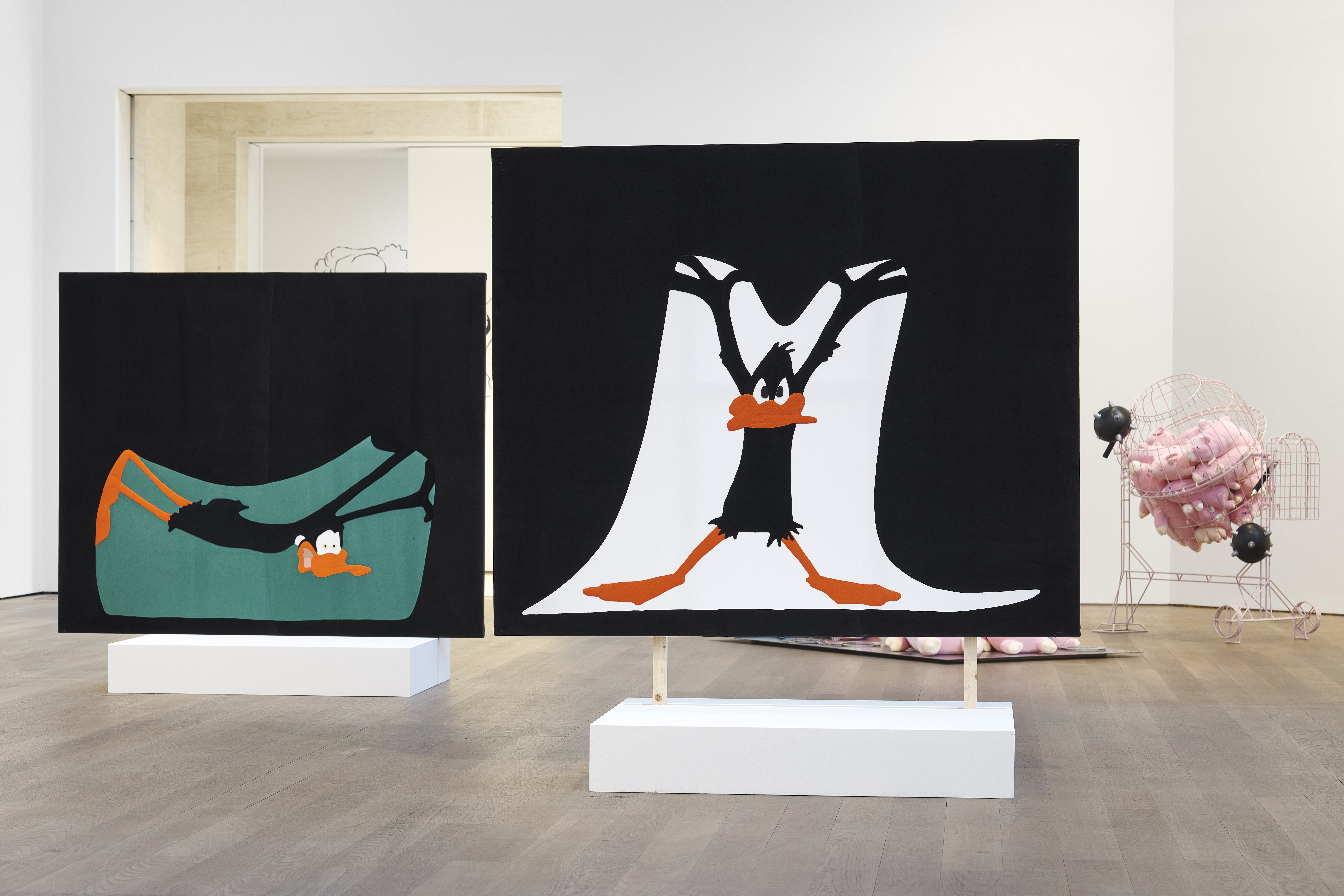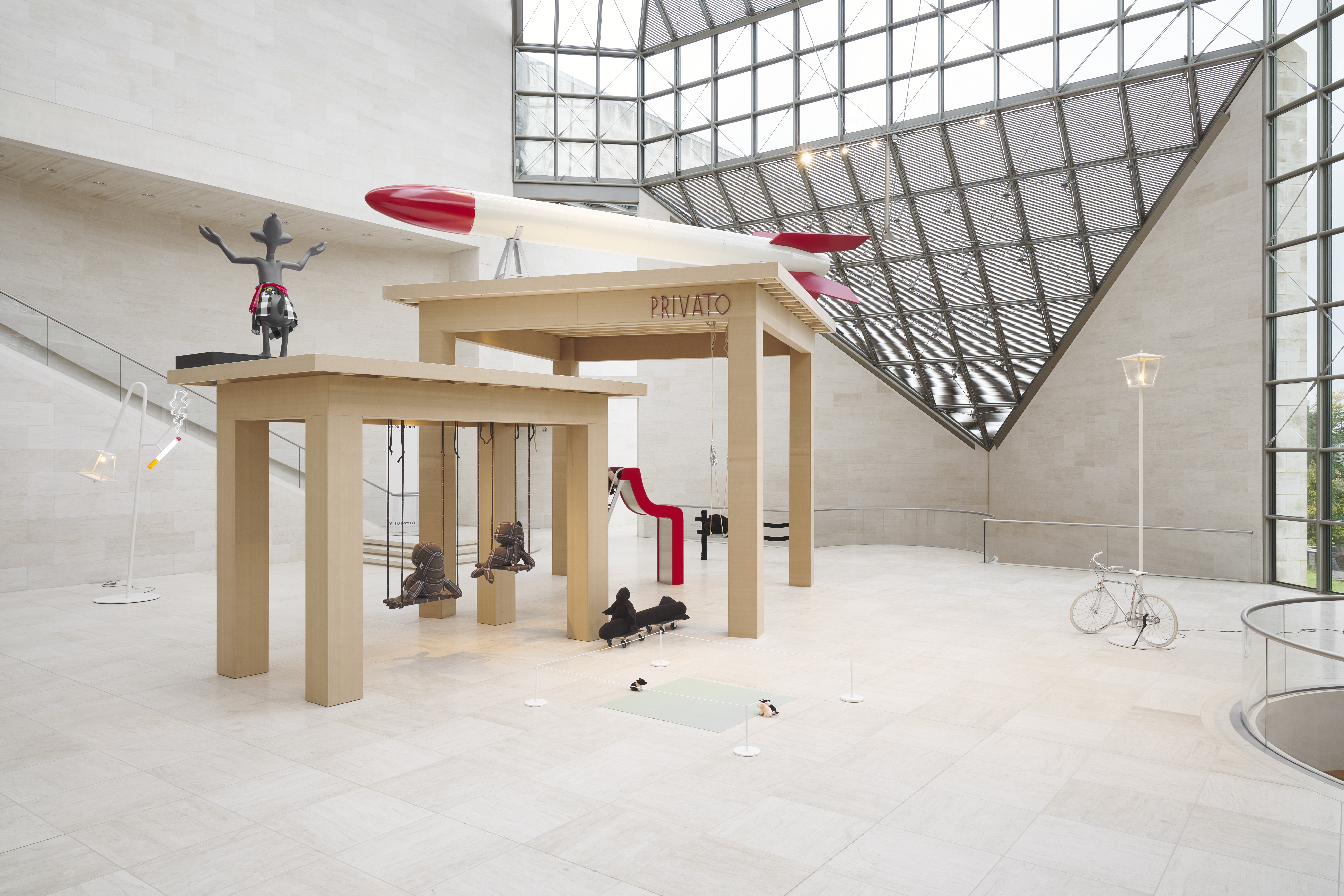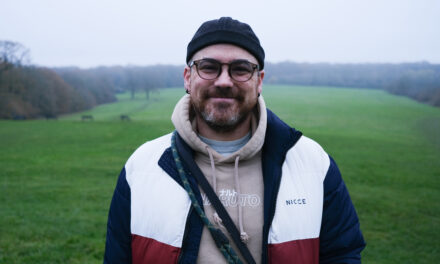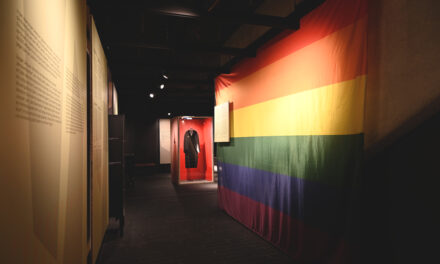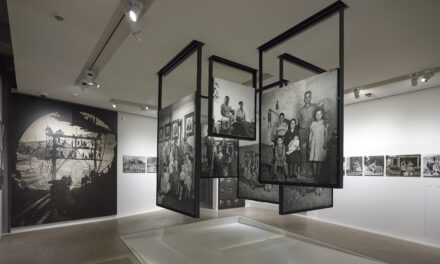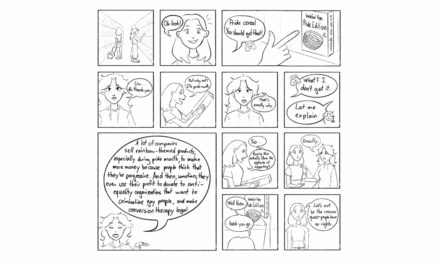Vue de l’exposition Cosima von Bonin : Songs for Gay Dogs, 11.10.2024 — 02.03.2025, Mudam Luxembourg
Photo : Mareike Tocha © Mudam Luxembourg
In Songs for Gay Dogs, Cosima von Bonin invites visitors into a world of contradictions, humor, and muted, but present critique at Mudam Luxembourg – Musée d’Art Moderne Grand-Duc Jean. It’s a vibrant, sprawling exhibition filled with fabric sea creatures, oversized furniture, and familiar cartoon characters. But beneath its playful surface lies a deeper exploration of societal norms, identity, and consumer culture.
Von Bonin’s works thrive on ambiguity. Her creations—be it a scallop peering from a velvet shell, a shark circling a can of cat food, or Daffy Duck depicted as a messianic figure—tease the viewer with layers of potential meaning. They challenge us to reconsider what we take for granted, from cultural symbols to our own routines. As the artist puts it, “Everything is stolen”, a sentiment that encapsulates her process of borrowing, transforming, and reinterpreting elements of pop culture into something entirely her own.
The title Songs for Gay Dogs is as intriguing as the exhibition itself. A brief search reveals it is a reference to the music album of the same name by Paddy Roberts. However, that is all. There are no dogs to be found, gay or otherwise, but the show overflows with an eclectic cast of characters, including Daffy Duck, Bambi, and an array of anthropomorphic marine animals.
Often caught in idle poses or seemingly mid-action, these figures blur the line between life and art. Von Bonin uses them to echo what she describes as “systemic fatigue”, a feeling of exhaustion in response to societal pressures to always be productive. Interestingly, the most explicitly queer symbol in the exhibition is a rainbow-handled axe placed high on a gallery wall, far out of the viewer’s reach—highlighting the same contradictions and playful subversions that define von Bonin’s work.
A standout feature of the exhibition is its site-specific installation in the Grand Hall. Massive tables dominate the space, transforming it into a surreal playground. Perched on these oversized structures are again, textile creatures—whales, scallops, and fish—crafted with intricate detail. By scaling up mundane objects and placing them in unexpected contexts, von Bonin alters our perception of the museum’s architecture, spatial proportions, and our relationship to the objects themselves. Visitors are drawn into a childlike perspective, recalling a time when the world seemed impossibly large and full of wonder.
Von Bonin’s use of fabric is central to her work. While this material often carries domestic and feminine associations, she subverts these expectations with bold, unconventional designs. In Open Your Shirt Please 3 (2019), for instance, a black fabric panel depicts Daffy Duck struggling against an encroaching darkness that seems ready to consume him. The imagery is both humorous and unsettling, reflecting themes of exhaustion and resistance. Through such works, von Bonin transforms everyday materials into tools for questioning power and control, blending pop culture with existential weight.
Throughout the individual rooms of the gallery, we see von Bonin play with themes of hierarchy and performance. One installation features a council of fabric fish and sharks encircling a smoky can of cat food labeled « Authority Purée ». It’s an image that defies easy interpretation. Are these creatures staging a rebellion, participating in a ritual, or simply having fun? The ambiguity is deliberate, encouraging viewers to find their own meanings in the work.
Daffy Duck, one of the exhibition’s most recurring characters, is reimagined in surprising ways. In Church of Daffy (2023), he is cast as a life-sized, statue-like figure—a flawed yet strangely endearing leader. Known for his greed, neurosis, and relentless pursuit of fame, Daffy becomes a reflection of human flaws and, at the same time, resilience. Von Bonin’s treatment of Daffy is both humorous and critical, using the character as a way to explore the absurdities of our individual behavior.
This blend of humor and critique runs throughout all of von Bonin’s work. Her art embraces contradictions: it is soft and hard, funny and dark, familiar and strange. It invites laughter but also introspection. Through her use of oversized objects, cartoon figures, and bold fabric creations, von Bonin transforms the museum into a carnival of ideas—a space where the boundaries of art, pop culture, and life dissolve into each other.
Adding another layer to the exhibition is the accompanying publication, also titled Songs for Gay Dogs. More than a catalog, it’s an artist’s book filled with essays, experimental texts, and archival images. It delves into von Bonin’s themes, from her fascination with the carnivalesque to her playful critiques of consumer culture. The book captures the spirit of the exhibition, offering readers a deeper understanding of the artist’s unique approach.
At its core, Songs for Gay Dogs celebrates chaos and creativity. Von Bonin’s works encourage us to embrace the absurd, question the familiar, and rethink the roles we play in our own lives. Her playful yet deeply thoughtful world reminds us that art doesn’t need to provide answers—it can simply make us see things differently. Whether through a fabric whale, a tired cartoon duck, or a smoky can of cat food, von Bonin’s art speaks to the complexity and humor of being human, regardless of the differences between us.

